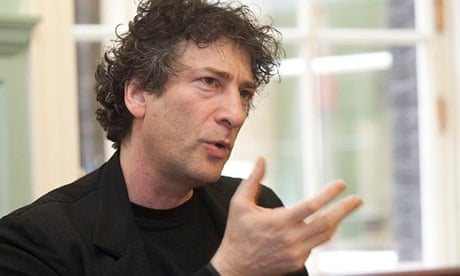I’ve always read a lot, and back when I was a child I basically read everything with print on it I could find, working my way through the local library. One of my favourites was the
Narnia series, by C. S. Lewis, in an edition wonderfully illustrated by Pauline Baynes.
I knew at the time they were sexist. Hey, at the time
most children’s books were sexist; I was brought up on
Enid Blyton, for heaven’s sake. I just ignored it as best I could. I also had an uncomfortable, but unexamined, feeling that they were racist. I didn’t spot the religious overtones until my older sister pointed them out; I ignored the most overt bits after that.
I remember the books fondly, but haven’t read them in the last several decades. I was worried whether the
Suck Fairy would have taken its toll (although Marjorie Phillips’
Annabel and Bryony survived her ravages). Anyhow, I’d read them enough that I virtually knew them by heart. Or so I thought.

My main problem with the Narnia at the time was empathising with the devastating sense of loss the children must have had when they returned home. Yet absolutely nothing was made of this in the books themselves. Years later, I came across Jo Walton’s short story
Relentlessly Mundane, which captures beautifully everything I’d felt.
So I was going along quite happily with these memories, when a couple of months ago I came across a reference to
Ana Mardoll’s blog, which said she was going through the Narnia books, discussing them. She has indeed been discussing them, deconstructing them, in relentless detail, since mid 2011. As of current writing, she is halfway through
The Horse and His Boy, having already covered
The Lion, The Witch and The Wardrobe,
Prince Caspian,
The Voyage of the Dawn Treader, and
The Silver Chair. I clicked through, gave the most recent post a cursory glance, then read it, then read the previous one, then the one prior to that, then found
the index and started from the beginning, and … I have just emerged from that rabbit hole, having had some of my fondest childhood memories totally eviscerated.
The books aren’t just sexist; they are
dreadfully sexist. They aren’t just racist; they are
appallingly racist. And classist. They aren’t just nice little religious allegories; they present a dreadfully cruel and capricious religion. And, possibly most damning of all for my fond memories, they are just
very badly written.
Ana Mardoll does a brilliant job picking apart these books.
Sexism: when women and girls do certain things, it’s wicked or evil; when boys or men do analogous things, it’s right and proper. We have bad Lucy eavesdropping in
TVotDT, versus good Peter and Caspian eavesdropping in
PC. We have the wicked White Witch giving Edmund magical food in
TLtWatW, versus the good Coriakin serving Lucy a magical meal in
TVotDT. We have the bad Aravis drugging her servant to cover her escape in
THaHB, versus Caspian’s tutor the good Doctor Cornelius sending his servants into a charmed sleep for his escape. Notice how Caspian’s wife never even gets a name? And there’s much more.
Racism: well, Calormene. Need I say more? Well yes. When brown Calormen do certain things, it’s wicked or evil; when white Narnians or equivalent do analogous things, it’s right and proper. So we have the wicked slavery of Narnians by Calormenes in
TVotDT, versus the good (unacknowledged) slavery of the mutilated Dufflepuds by a (white) ex-star, also in
TVotDT. Also, there is the racism (or maybe “merely” classism) against the native
Narnians: we have the depiction of most of the Talking Beasts as inferior, childlike,
lower class. Yes, even Reepicheep. (Also, notice how Reepicheep is the
only native Narnian on the Dawn Treader.) And there’s much, much more.
Religion:
oh dear, the religion. So, Aslan is frankly a jerk and a bully. He leaves Narnia to freeze under the White Witch for a hundred years, only showing up to help some English schoolchildren, and set them up to rule over the natives. He then leaves Narnia for over a thousand years, to be invaded by Telmarines, who proceed with genocide against the natives, and only shows up to help some English schoolchildren help a Telmarine set himself up to rule over the natives. A few years later he shows to help the newly installed Telmarine ruler and some English school children on their boat trip. And so on. He traumatises various characters: Trumpkin, Eustace, Jill Pole, Hwin, Aravis, Bree; all for their own good, of course. And he has a
hate-on for Susan. (I
did notice that originally, maybe because of her name.)
Badly written: the characters are inconsistent, because they do what is needed for the plot, which does what is needed for the message to be delivered. And the world building is shoddy. Eg, how did a Dryad sing to the infant Reepicheep, since Aslan only later reawakened all the trees? Eg, there are no humans in Narnia other than Peter, Susan, Edmund and Lucy, yet in
THaHB, the delegation to Tashbaan is mostly human. Maybe these are Archenlanders (and where was
it during the White Witch’s reign?) who’ve emigrated to Narnia. Or maybe the book is actually set after
PC, the delegation are Telmarines, and it was only moved earlier in the timeline to allow Lewis to shame Susan yet again? The timeline in
TSC is frankly ludicrous. Many other plotting weakness are given in Mardoll’s deconstruction. The entire issue is that Lewis doesn’t seem to
care about his characters, or the plot, only his message.
Oh dear. By the end of each of Mardoll’s blog posts, another little piece of my past has been dissected, examined to destruction, and found terribly wanting, and I am yet further appalled by what I had read as a child and simply not noticed. (I
hope that I might have noticed these things if I had re-read them recently, but who can tell?)
If that were all, that would be more than enough to make Mardoll’s blog worth reading. But there’s more. At the end of each post are the comments.
Amazingly, after Mardoll’s seemingly exhaustive dismantlings, the commentariat put forward yet more examples of further horrors that she missed! But the best comments are the various head canons and fixfics that come to the rescue. There are loads of gorgeous little fragments of writing that restore
Narnia as it should be from the
Narnia as it is. These aren’t consistent with each other, but they provide multiple little strands of possible universes, better Narnias, better both in content and in style, that surround and help replace the appalling, inconsistent, badly-written actual Narnia. Meet the immortal Reepicheep. See Eustace as the hero. See the Dufflepuds as the hero. See
Susan as the hero. Discover how Trumpkin is saving the kingdom from Caspian. Emapthise with Hwin’s backstory. Have your childhood rescued, improved, enriched.
 Boris Johnson rules himself out of Conservative leader race
Boris Johnson rules himself out of Conservative leader race



















